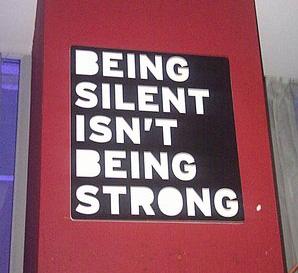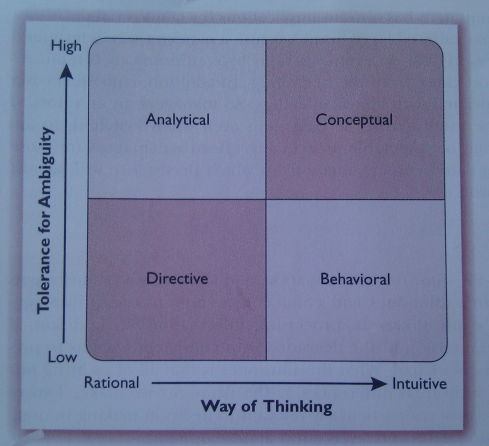
Let all the flowers blossom under the clouds. I took this photo @ La Gomera, February 2012
I have a long history with many great IT Service Management (ITSM) professionals. For many years I worked in this industry and simultaneously I was an eager ‘activist’ for a global non-profit association called IT Service Management Forum (itSMF).
I have been thinking what was it that strongly drew me to towards this group of IT professionals. Afterwards it is easy to say that it was maybe my strong urge to help and to mediate. It is quite common that there is a communication gap between the IT people and the business people. It was sometimes painful to watch. The gap can be seen in the field of communication especially, but also in the way of seeing how organization should prioritize projects and how the customers should be engaged with.
Many of my (IT) readers know the ITIL framework well and have been utilizing it for a decade or two. Some of you might not have heard about it. To put it shortly, it is a set of best practices for aligning the IT services with the needs of the business. It consists of several books that describe the processes, roles, and many other things. A better definition of ITIL can be sure found. My ITSM friends, you could add those to the comments section, thank you! You know that stuff better than me.
Best Practices, is it a swear word?
Anyways, the inspiration to write this post initiated as the word pair ‘best practices’ popped up yesterday evening from a totally different environment. I was following Enterprise 2.0 Summit conference ongoing in Paris, and suddenly my E20/Knowledge Management/Collaboration guru friends started to speak about best practices in the Enterprise 2.0 context. For example IBM’s Collaboration Evangelist Luis Suarez tweeted the following:

Well, it made me think: how Enterprise 2.0 issues and challenges relate to the discussion in the IT Service Management sphere? It is about people and the organization culture in both cases. It is also about the processes and tools. It is about how enterprises must adapt to change. There are many basic processes within the IT support function (Incident management, problem management, etc…) that are relatively similar for many organizations, so you can pick and choose suitable parts of the suggested processes from ITIL framework. Let us call these, not best practices, but perhaps ‘common practices’.
So, Best Practices, is it a swear word? Yes, if misunderstood and misused as a standard that must be strictly followed. As Luis tweeted “what works for some won’t work for the others”. When best practices are approached as a set of suggestions, it works better. I’d dare to say that the same that applies to ITIL & IT Service Management works for Enterprise 2.0/Social Business design.
Despite of which business process we’re looking at, we all know that we need easier and more transparent communication and collaboration, and more open information and knowledge sharing. Unluckily it is sharing that is a swear word for many.
ITIL Framework and Enterprise 2.0?
For too many professionals the Enterprise 2.0 and collaboration initiatives are something fuzzy, non-measurable, or too tool-oriented stuff. Similarly lots of criticism has been targeted against ITIL framework. Analyst Stephen Mann from Forrester described the situation very well in his recent blog post. Simultaneously many organizations are telling that they are benefiting from these initiatives. My professional ITSM friends know all this better, and can sure share good examples. My humble point here is that I recognize the same kind of suspiciousness and unhealthy pessimism with Enterprise 2.0 discussions in the organizations as we have experienced with ITIL. The arguments are pretty much the same.
My view on this topic of “IT & Social” is close to how Stephen Mann chose to put it when speaking about the ITIL challenges and bashing. And that is why I’d like to expand this to other areas too (HR, Marketing etc). Stephen says (emphasis is mine):
“However, I can’t help think that WE need to change as much as [ITIL] needs to change.”
That is indeed wisely said, we need to start the change from ourselves. No framework will do the change, the way we behave will. It is important that we are not putting all our energy to finding the threats and disadvantages of ITIL or Social Technology, or any disruptive stuff landing on our path (right now Cloud Technology, consumerization/BYOD, social media, or business models as SaaS). BTW Have anyone studied the headlines about Cloud Computing, the ratio between positive and negative, between the threats and opportunities presented? In Finland you hardly see any positive Cloud Computing articles. Ah, the attitudes, ok, I am biased…
IT Professionals as Social Creatures
IT professionals (as a role) have been around for a few decades, so the fact is that IT is not yet a very mature profession. People within IT have grown in to their (sometimes fuzzy) roles via many different paths, often more or less randomly.
I think IT professionals are Passionate Pioneers, very often much in love in the ways of working they have created by themselves. (Of course, this is a rough generalization.) Passion is good, but stubbornness in front of the change is not. It is totally understandable that it will take some time to adapt to the disruptive changes we have at hands. Social media adoption is challenging for many IT people, as well as for HR people, as it means, for example, that the illusion of full control, that both IT & HR people often have, must be gone. In my IT circles I also hear repeatedly, “social media is not something for a professional IT work, it is a play”. An alarming attitude but I stay optimistic.
I recently attended an interesting event organized by ITSM SaaS vendor ServiceNow. During the event I heard lots of success stories and, of course, challenges related to all three areas: IT people, their tools and the processes based on ITIL framework. Their Social IT evangelist Chris Dancy is passionately preaching to IT people about the importance of embracing social media. And he does it well 🙂 Here’s a link to one of his excellent presentations.
Ok, now back to the Enterprise 2.0 Summit tweeting rally (hashtag #e20s) where I saw short discussions about the characteristics of the IT people and their willingness to ‘go social’. Here’s an example in form of tweets by Mark Masterson of CSC and Dion Hinchcliffe of Dachis Group:

Interesting indeed! But having worked with IT people a lot, I can see not only challenges but so many great opportunities too. I do believe that we’ll “get by with a little help from my friends” in a Beatlessian style, passionate IT people could and can take a more active role with the social media initiatives and truly be an enabler in the social wave within their organizations.
Right Attitude towards the Soft Social Side is the New Black
How to be prepared? As an ex-girl-scout I believe that you can be better prepared for surprises and new situations when having an open attitude and some curiosity. Even in the most disruptive changes, it is your attitude that counts. How do you choose to approach the situation at hands? The support functions in organizations, as for example IT, Marketing and HR, truly need to stop ‘dragging’ and start to act. Focusing on the customer, internal or external, is vital. The soft side, people & culture related, must get more attention.
I very much like the five recommendations Forrester’s Stephen Mann suggests for the IT Department, the steps which might help you to cope with the challenges (with ITIL adoption):
- Step 1: Understand what ITIL is all about, especially the importance of people.
- Step 2: Be realistic about existing ITSM process maturity and improve them gradually.
- Step 3: Evaluate technology only after you’ve addressed goals, people, and processes.
- Step 4: Get the initial planning right, but also plan beyond the “technology project.”
- Step 5: Regularly communicate ITIL’s value and involve the IT and non-IT stakeholder.
I am surprised and delighted how well Stephen’s five steps fit to Enterprise 2.0/Social Business discussions! Let me compare these two, well, it fits like a glove. I modified Stephen’s steps a bit:
- Step 1: In Enterprise 2.0/Social Business initiatives, you need to understand the big picture and especially the importance of people.
- Step 2: Be realistic about existing information and communication processes and improve them gradually (and make more social).
- Step 3: Evaluate social technology only after you’ve addressed goals, people, and processes.
- Step 4: Get the initial planning on the sufficient level, and also plan beyond the “technology project.” Pilot and pivot, find the passionate firefighters to open the way.
- Step 5: Regularly communicate the value of social for your organization and truly involve and engage all the various stakeholders, from business side and from all support functions. Social ‘belongs to’ everybody.
These areas — IT Service Management & Enterprise 2.0/Social Business — have a lot in common. Both are about people, processes and the tools. And in both areas the discussion is too often spinning around the technology and the processes, leaving the people play the supporting part in the process and tool play. And it should be the opposite.
Luckily, there are hundreds of wise people in both camps speaking about the essential role of the people. To name a few from the ITSM sphere: Rob England, Chris Dancy, Aale Roos, Jaakko Kuosmanen, Mark Smalley, James Finister, and Paul Wilkinson, and from the E20/Social Business side (a quick selection from yesterday’s #e20s discussions): Luis Suarez, Susan Scrupski, Dion Hinchcliffe, Thomas Vander Wal, Mark Masterson, Rawn Shah, Ana Silva and many, many more. I wish that we can learn from each other, and support in the painful unlearning process as well.
Attitude, Behavior, Culture
As an example of one possible remedy, I would like to introduce to you a new kind of ABC — ABC for IT people, and why not for HR people too. My dear friend Paul Wilkinson has brilliantly coined the term of ABC of ICT, ABC meaning Attitude, Behavior, and Culture.
It is so easy to stick (and to stuck) to fine-tuning of processes and buying fashionable set of tools – and at the same time to bluntly expect:
- that people automatically have the right attitude that is needed for the changes in the work processes and tools,
- that people behave as wished and that they right away understand the reasons behind why this new behavior is required,
- that the employees live, breathe and nurture the culture which the management have manifested in their new strategy slides. Or that the employees easily skip the existing culture that has been around for years.
I recommend that you check out Paul’s book of ABC for ICT, it is brilliant. Lots of great examples from real life IT. Could be usable in the E2.0 side too?
To summarize my thoughts on the topic, here’s my two cents:
People practices. As much as we need best (or common) practices for some processes, we need to remember to ensure the continuous focus on people, and also learn and embrace some new people practices. He tangata, as Rob England reminds us.
Healthy Attitude towards Control and Risks. Support functions as IT & HR need to find a new kind of balance for their urge for control. Naturally risk management is always needed, but it should not prevent necessary improvements and changes. To find a balance between risk taking and embracing opportunities is the key. Policy is too often a way of saying ‘we don’t really have a reason, but we don’t feel like it’.
Relationships, Networks, and Innovation. It is all about open, trusting relationships and learning networks. Innovation grows from that. Unnecessary hierarchies must be opened and partly broken down in every silo in the organization. Co-creation and innovation with both internal and external parties should be actively promoted and supported. This is not always easy task for neither HR nor IT as they have strong professional identities with a culture of control. Simultaneously HR people have the advantage that they know the human side, and the IT people are often of curious nature, just re-target some of that curiosity from technology to the social aspect.
Power Balance and ‘People Units’. The power balance of the different organizational units should be studied too. My hunch is that business units and Financials & Legal from the support side have often advantage, power-wise. The strong and the noisy gets heard easier? Maybe. The people in Marketing, Customer Service, IT and HR have the power in certain areas, but it is not always balanced. (I am aware of the fact that there are, of course, exceptions and lots of variation, but please let me play…). As people issues are essential to tackle in the disruptive change, more power to the ‘people units’ would not be a bad idea.
Finally, yes, I confess that I do oversimplify some aspects here and I am very aware of the enormous complexity in many business environments. But I wish that you take this post just as a quick reminder and continue the discussion in your blogs and in your organizations. I love IT people and I love social media opportunities, and I am for all kinds of collaboration for the better outcome.
We all know that “social” is not something you glue on top of the things, applications, processes…it’s not a feature. It’s about relationships and communication. The ongoing change is something bigger, it is something deeper: it’s in our DNA to interact with other people, despite of your profession. I am optimistic. We have all the ingredients for a continued passion.
And remember to leave room for serendipity!
Thank you Luis Suarez, Paul Wilkinson and Stephen Mann for the inspiration for this post.
Related reading:
Stephen Mann: The ABC of ICT – The Top 10 People Issues
Bertrand Duperrin: How to put the social into the processes?
Dion Hinchcliffe: Next-Generations Ecosystems and its Key Success Factors
More presentations coming to this list from #e20 Summit, will add as soon as I have checked those out!


















